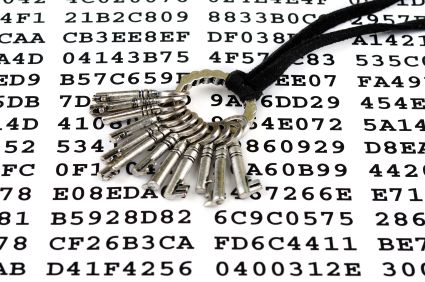What Is End-to-End Encryption? Why Should You Care

 It seems everyone is into end-to-end encryption these days. WhatsApp, Google or Dropbox.
It seems everyone is into end-to-end encryption these days. WhatsApp, Google or Dropbox.
But what exactly is it? More than a cool catch phrase of the post-Snowden era, end-to-end encryption is considered the remedy to most e-privacy issues out there. Let`s take an in-depth look to understand the concept better.
First of all, encryption is a way of converting all electronic data (files, passwords, images) into an unreadable form that can be deciphered only by those with the corresponding code, known as a decryption key.
In encryption`s early days, ancient Greeks and Romans listed letters with corresponding numeric positions to create a secret code for sending messages. Only the person uncovering the algorithm could read them. Modern encryption techniques are a bit more complex.
Encryption can be performed at different levels, each with different types of protection and implications. End-to-end encryption is handled by service providers and refers to data travelling through a communication system where only the two communicators (sender and receiver) can decrypt the message. No eavesdroppers, not even the company facilitating the communication. But who holds the key in this case? Theoretically, only the endpoint computers hold the cryptographic keys, while the company server passes along messages that it can`t itself intercept.
What is an encryption key?
The main types of encryption are symmetric and asymmetric. In an asymmetric type of encryption, the public key is often a random, unique and one-time-use string of characters that can be used by anyone (any computer) to encrypt messages and send them to you. But only you can decrypt those messages with the corresponding (and confidential) private key. Symmetric algorithms use only one shared key.
What can be encrypted?
Emails, photos, credit card data, files, and photos” basically any piece of data. An easy way to encrypt all your data at once is to use a VPN connection and send your sensitive information through it. While this type of encryption is not end-to-end in most cases, it prevents your unencrypted information from being sniffed while you`re connected to a public Wi-Fi hotspot. We have included this type of protection, along with real-time information scanning and filtering in the new Bitdefender Box.
What are the benefits of encrypting your data?
Even if you were to lose your computer, become infected with malicious software or get hacked, the data inside your computer is still safe. To keep it this way, you can use services as well as special features embedded in your devices, such as Android.
But why do most web services avoid end-to-end encryption?
Unfortunately, end-to-end encryption is not simple to implement. It involves extra computation on both clients to negotiate keys and actually do the encryption / decryption, which translates in slower response and lower battery performance on mobiles, among others. Also, adding strong encryption to popular Internet products can make them more expensive and harder to use, thus less appealing to customers and less profitable for companies.
But most importantly, end-to-end encryption means intermediaries like Google and Microsoft can`t send copies of data to authorities. And this goes against CALEA, a US 1994 law allowing authorities to wiretap communications companies to investigate crime suspects. Thus, entities like the FBI are pleading to modify the law as to include other services like Gmail and iOS. Plus, adding new features like creating targeted ads based on message content becomes more difficult.
So, why is it important?
Because encryption is probably one of the best weapons you, as a consumer, can wield to defend your sensitive data from espionage, hacktivists, spyware, or human negligence and error. That`s why every security-conscious user and company is doing it.
tags
Author
Alexandra started writing about IT at the dawn of the decade - when an iPad was an eye-injury patch, we were minus Google+ and we all had Jobs.
View all postsRight now Top posts
How to Protect Your WhatsApp from Hackers and Scammers – 8 Key Settings and Best Practices
April 03, 2025
Outpacing Cyberthreats: Bitdefender Together with Scuderia Ferrari HP in 2025
March 12, 2025
Streamjacking Scams On YouTube Leverage CS2 Pro Player Championships to Defraud Gamers
February 20, 2025
How to Identify and Protect Yourself from Gaming Laptop Scams
February 11, 2025
FOLLOW US ON SOCIAL MEDIA
You might also like
Bookmarks








